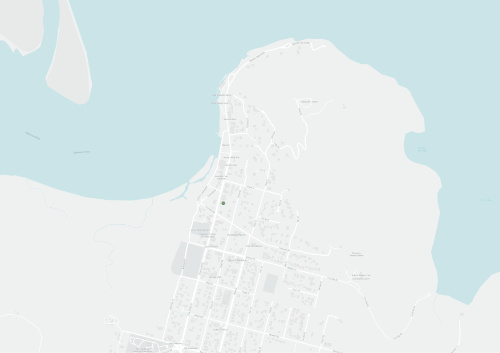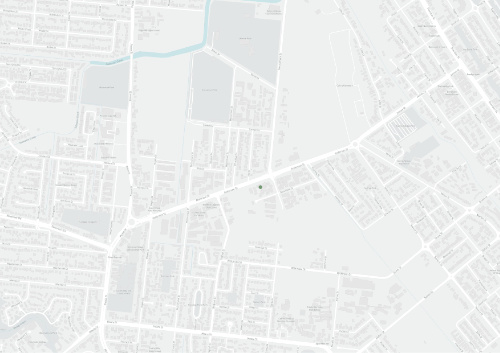Plan Explorer
Filter by:
Region
Topic
Sector
Other
Results
Aust-Pac Capital Pty Ltd - initial advice statement
OperationalUtah Development Company (UDC), BHP Australia and Bathurst Coal and Power Limited (BPCL) conducted extensive geotechnical investigations across the resource (then known as EPC 463) in the 1970s, 1980s and the 1990s.
Western Cape Communities Trust investment strategy 2011-2022
This investment strategy released in 2011 presents an in-depth explanation of the funding allocation for the Western Cape Communities Trust, established by the Western Cape Communities Co-existence Agreement for a number of purposes such as natural resource management and funding allocation.
Western Cape Chamber of Commerce strategic plan 2010-2012
Obsolete CommunityThis strategic plan was developed following a review of the 2007 Western Chamber of Commerce Strategic Plan during a workshop in Weipa on the 20th of November 2009.
Western Cape Communities Trust & Western Cape Communities Coordinating Committee strategic plan 2009-2012
Obsolete StrategicThis document was released by the Western Cape Communities Trust (WCCT) and Western Cape Communities Coordinating Committee (WCCCC) as a plan to deliver on 4 key objectives within the mining lease area surrounding Weipa.
Great Barrier Reef report card 2012 and 2013
Current InformationalThe Great Barrier Reef report card is part of the Reef Quality Water Protection Plan and measures the progress from 2009 to 2013 regarding the Reef Water Quality Protection plan 2009 targets.
Reef Water Quality Protection Plan 2009
Superceded StrategicThe intention of the Reef Water Quality Protection Plan 2009 was to ensure that the water quality of the Great Barrier Reef Lagoon was improved by addressing non-point source pollution caused by large-scale land use along the eastern coastline.
Port of Weipa environmental management plan
Current StrategicThis environmental management plan was released by the North Queensland Bulk Ports Corporation as part of their environmental program with the objective of acting as a reference document for all then-current and potential users of the Weipa port.
Mitchell River Watershed Management Group operation plan
Superceded OperationalThe Mitchell River Watershed Management Group released this operational plan as a follow up from the business plan to take tasks identified therein and prioritise them, identify potential partners for projects, and setting measurable outcomes and appropriate times for completion of projects.
Normanby Catchments water quality management plan - draft
StrategicThis is the final draft for the Normanby Catchment Water Quality Management Plan and was released for consultation and review on the 1st of September 2013.
Laura Rangers weed and fire plan
Current CommunityThis poster outlines the objectives, location, strategy, planned outcomes, and implementation of the Laura Ranger's Weed Management Strategy.
Mitchell River Watershed Management Group business plan
Current OperationalThis document was a strategic plan released in late 2012 that intended to guide the Mitchell River Management Group on the priorities of the organisations stakeholders, defining a set of projects and activities for implementation, documenting the areas which funding might come from, and defi
Cape York Peninsula Land Use Strategy: Land Use Program: Aspects of Commercial and Non-Commercial Fisheries of Cape York Peninsula
CYPLUSCYPLUS commissioned WBM Oceanics Australia to prepare this report which describes the level of use of commerical and non-commerical fisheries, factors affecing the environmental condition of said fisheries and habitats, and management issues relating to each of the fisheries and habitats in 1994.
Plan for the recovery of the southern cassowary
Current Threatened speciesThe southern cassowary (Casuarius casuarius johnsonii) occurs primarily in rainforest habitats but can also be found in woodlands, swamps, and disturbed vegetation forraging for fruits throughout the Wet Tropics.
Recovery plan for the stream-dwelling rainforest frogs of the wet tropics biogeographic region of north-east Queensland 2000–2004
Threatened speciesThis plan was released in 2001 by the Natural Heritage Trust and Queensland Parks and Wildlife Service with the ultimate goal of improving the conservation status of particular species of stream dwelling rainforest frogs within the Wet Tropics.
Springvale Erosion Management Plan
CurrentIn 2016 the Queensland Government purchased Springvale Station, a 56,295ha property in Far North Queensland (Figure 1).
Annan and Endeavour Strategic Plan
Current StrategicThe Annan-Endeavour Catchment Management Group has developed this Strategy in close association with all interested community, government and industry groups.
Brumby Hollow Property Pest Management Plan
Obsolete OperationalThis plan outlines the sustainable land management practices for Brumby Hollow over 4 years. Objectives are:
Bunata Property Pest Management Plan
Obsolete OperationalThis plan aims to protect the economy and environment of Bunata from the adverse impacts of weeds and feral animals.The objectives for weed and feral animal management in Bunata over the next 4 years are:
Butchers Hill Station Pest Management Plan
Obsolete OperationalTo manage the land of Butchers Hill Station, in a sustainable way, by controlling weeds and pest animals on the property, and ensuring it’s economic and environmental viability continues into the future.
Normanby Catchment Water Quality Management Plan
Current StrategicThe Normanby Catchment Water Quality Management Plan is written in accordance
with the Australian Government’s Framework for Marine and Estuarine Water Quality
Jim's Joint Property Pest Management Plan
Obsolete OperationalThe plan has been prepared to protect the economy and environment of “Jim’s Joint” from the adverse impacts of weeds and feral animals.
Kaanju Homelands Wenlock & Pascoe Rivers Cape York Peninsula Indigenous Protected Area Management Plan
Obsolete OperationalPrimarily, this Plan is for Kaanju people living on homelands, but it also serves as a guide for external land and resource management, conservation, service delivery, economic development and community development organisations and agencies, both government and non-government, engaged with Chuul
Kuuku I’yu Northern Kaanju Ngaachi Cultural Heritage Management Plan
Current OperationalThis document outlines the cultural heritage management plan for the Kuuku I’yu Northern Kaanju Ngaachi for the next six years from 2011 to 2017.
Laura Ranger Country Plan and Poster
Current OperationalPoster outlining a set of guiding priniciples on which Laura Rangers will operate on their country.
Laura-Normanby Catchment Management Strategy
Current StrategicThe Laura-Normanby Catchment Area covers a vast and relatively undeveloped area with extensive riverine and wetland systems, one of Queensland's largest conservation areas (Lakefield National Park), numerous sacred aboriginal sites, good cattle country and rich agricultural lands.
Mitchell River Watershed Strategic Plan
Current StrategicThe Mitchell River Watershed Strategic Plan 2013-2016 is an update of the Mitchell River Watershed Management Plan created in 2000.
Wunta Traditional Fire Management Plan Stage 1
Current OperationalThis document is to support the re-introduction of an indigenous practical fire management action plan to the Nesbit river area in Cape York Peninsula. The project is a stage one plan that will develop over time with further stages and to encompass more fire managed land in the area.
Wunta Draft Strategic Plan
Current StrategicWe are proud and culturally strong community organisation.
Cape York Peninsula Regional Biosecurity Strategy
Current StrategicCape York Natural Resource Management (Cape York NRM), Cook Shire Council (CSC), Weipa Town Authority, Wujal Wujal, Hopevale, Lockhart, Mapoon, Napranum, Aurukun, Pormpuraaw and Kowanyama Aboriginal Shire Councils and the Northern Peninsula Area Regional Council (NPARC) have collaboratively devel
Recently added
Cape York Peninsula Land Use Strategy: Natural Resources Analysis Program: Digital Geological Data for Cape York Peninsula
CYPLUSGeospatial information gathered previously was assembled and analysed to create a single integrated digital geological map of the CYPLUS area derived from the appropriate previous 1:250,000 series maps however with amendments and new information incorporated whre possible.
Cape York Peninsula Land Use Strategy: Natural Resources Analysis Program: Development, Maintenance and Coordination of the Geographic Information System (GIS) for Cape York Peninsula
CYPLUSThe CYPLUS GIS was created to support the collection, anaysis and display of natural resource, social, and economic data which arrose from the enactment of stage 1 of the Cape York Peninsula Land Use Strategy.
Cape York Peninsula Land Use Strategy: Land Use Program: Current Administrative Structures on Cape York Peninsula
CYPLUSThis project was commisioned in 1994 by CYPLUS to provide a description of the instiutional structures on the Cape York Peninsula that have relevance for land use planning and resource management.
Cape York Peninsula Land Use Strategy: Land Use Program: Economic Assessment and Secondary Tertiary Industries of Cape York Peninsula
CYPLUSThis report was commisioned by the CYPLUS task force for the Centre for Applied Economic Research and Analysis (CAERA) at James Cook Univeristy of North Queensland to perform a cross-sectoral economic assesment of the regional economy in the Cape York Peninsula.
Cape York Peninsula Land Use Strategy: Land Use Program: Fire on Cape York Peninsula
CYPLUSThis report was commisioned by CYPLUS and brings together published material on fire that is of relevance to the Cape York Peninsula.
Cape York Peninsula Land Use Strategy: Land Use Program: Indigenous Management of Land and Sea and Traditional Activities in Cape York Peninsula
CYPLUSThe Indigenous Mannagement of Land and Sea (IMLS) report was compiled by anthropologists and other specialists whose contributions relied on their long standinging familiarity with the Cape York Peninsula and the conditions of it's indigenous peoples.
Cape York Peninsula Land Use Strategy: Natural Resources Analysis Program: Groundwater Resources of Cape York Peninsula
CYPLUSThe study area of this report covered some 143,000 square kilometre, and is remote and isolated from all Australian population cenrs. This area includes Cape York Peninsula from north of Cooktown and some selected areas of the Torres Strait Islands.
Cape York Peninsula Land Use Strategy: Natural Resource Analysis Program: Flora Data and Modelling for Cape York Peninsula
CYPLUSThe Flora Data and Modellng Project was one of three projects undertaken by ERIN for the Natural Resources Analysis Program of CYPLUS stage 1.
Cape York Peninsula Land Use Strategy: Natural Resources Analysis Program: Insect Fauna Survey of Cape York Peninsula
CYPLUSIt was estimated that two out of every three species of living thing on the Cape York Peninsula are insects. This report surveyed a cross section of the Cape York Peninsula's insects and this provides information on the largest portion of the regions biodiversity.
Cape York Peninsula Land Use Strategy: Land Use Program: Land Degradation in Cape York Peninsula
CYPLUSThis project evaluated land degradationin terms of soil erosion and soil salinity. Soil erosion was examined by the Queensland Department of Primary Industries and the Australian Geological Survey Organisation with assistance from the Bureau of Resource Science.

